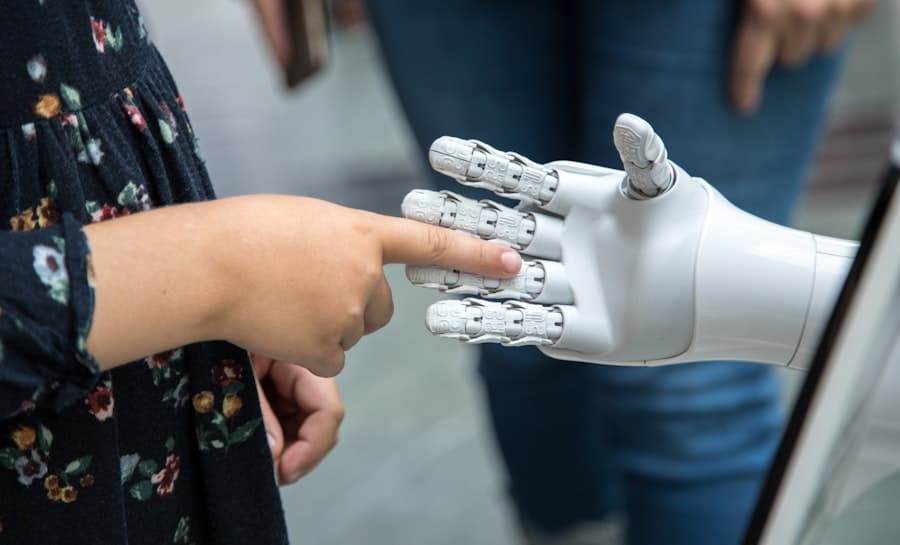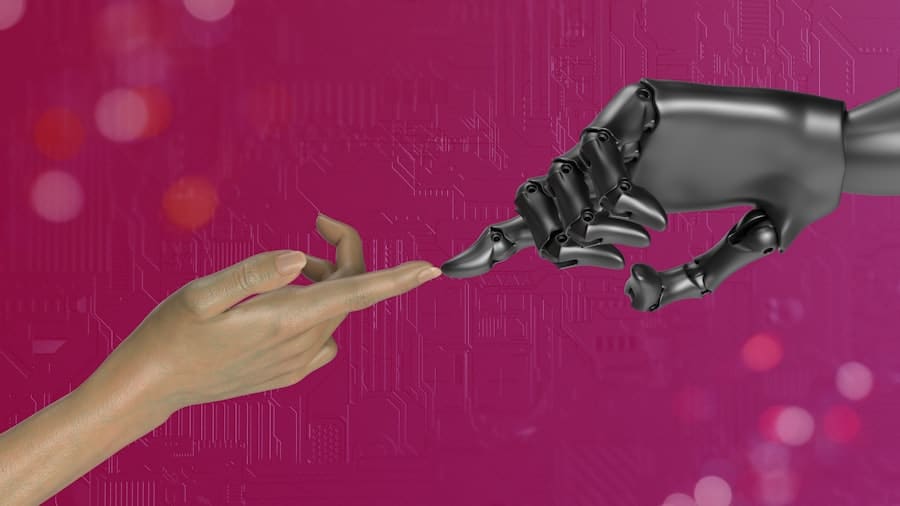Soft robotics is an innovative field that diverges from traditional rigid robotic systems by utilizing flexible materials and structures. This approach allows robots to mimic the adaptability and dexterity found in biological organisms, particularly in soft-bodied creatures like octopuses, worms, and even human hands. The essence of soft robotics lies in its ability to navigate complex environments and perform delicate tasks that would be challenging for conventional robots.
By leveraging soft materials, these robots can deform, stretch, and compress, enabling them to interact safely and effectively with their surroundings. The development of soft robotics has been propelled by advancements in materials science, engineering, and artificial intelligence. Researchers are increasingly exploring how soft robots can be designed to perform tasks that require a high degree of precision and sensitivity.
This has led to a growing interest in applications ranging from medical devices to search-and-rescue operations. As the field continues to evolve, it promises to revolutionize how we think about automation and machine interaction with the world around us.
Key Takeaways
- Soft robotics is a rapidly growing field that focuses on creating robots with flexible and deformable structures, inspired by natural organisms.
- Human-like dexterity in machines can lead to improved performance in tasks such as grasping, manipulation, and interaction with delicate objects.
- Soft materials play a crucial role in soft robotics by enabling robots to adapt to their environment, withstand impact, and interact safely with humans.
- Examples of soft robotics in action include soft grippers for delicate object manipulation, wearable exosuits for rehabilitation, and soft robots for medical procedures.
- Challenges and limitations of soft robotics include the need for advanced control systems, limited strength and speed, and the potential for wear and tear of soft materials.
The Benefits of Human-Like Dexterity in Machines
Enhanced Dexterity in Healthcare
The ability of soft robots to adapt their form to grasp and manipulate objects closely resembles human hand movements, making them particularly beneficial in fields like healthcare, where precision is paramount. Soft robotic grippers can delicately handle surgical instruments or assist in rehabilitation by providing gentle support to patients.
Sensing and Responding to Environmental Stimuli
Soft robots equipped with advanced sensors can detect changes in pressure, temperature, or texture, allowing them to adjust their grip or movement accordingly. This level of responsiveness not only enhances their functionality but also ensures safer interactions with humans and fragile objects.
Applications in Collaborative Robotics
The integration of sensory feedback mechanisms is crucial for applications in collaborative robotics, where machines work alongside humans in shared spaces.
The Role of Soft Materials in Soft Robotics
Soft materials are at the heart of soft robotics, providing the necessary flexibility and adaptability that define this field. Commonly used materials include silicone elastomers, hydrogels, and various composites that can mimic the mechanical properties of biological tissues. These materials allow for the creation of structures that can bend, stretch, and compress without breaking, enabling robots to navigate through tight spaces or conform to irregular shapes.
For example, silicone-based actuators can be designed to expand and contract in response to changes in pressure or temperature, mimicking muscle movements. The choice of materials also plays a critical role in determining the performance characteristics of soft robots. Researchers are continually experimenting with new formulations and combinations of materials to enhance properties such as strength, durability, and responsiveness.
For instance, incorporating conductive materials into soft structures can enable the development of soft robots that not only move but also sense their environment through touch or pressure.
Examples of Soft Robotics in Action
Soft robotics has already made significant strides across various sectors, showcasing its potential through numerous real-world applications. One notable example is the use of soft robotic grippers in agricultural settings. These grippers are designed to handle delicate fruits and vegetables without causing damage, thereby improving harvesting efficiency while minimizing waste.
By employing soft robotics technology, farmers can automate the picking process while ensuring that produce remains intact and marketable. In the medical field, soft robotics has been instrumental in developing minimally invasive surgical tools. For instance, researchers have created soft robotic catheters that can navigate through the human body with greater ease than traditional rigid instruments.
These catheters can bend and twist around obstacles, allowing for more precise targeting of treatment areas while reducing patient recovery times. Additionally, soft robotic exoskeletons are being developed to assist individuals with mobility impairments, providing support while allowing for natural movement patterns.
Challenges and Limitations of Soft Robotics
Despite its promising potential, soft robotics faces several challenges that must be addressed for widespread adoption. One significant limitation is the difficulty in controlling soft robots with precision. Unlike rigid robots that can be programmed with exact movements, soft robots often exhibit unpredictable behavior due to their flexible nature.
This unpredictability can complicate tasks that require high levels of accuracy or repeatability, making it challenging to integrate soft robots into environments where precision is critical. Another challenge lies in the durability and longevity of soft materials.
This raises concerns about the lifespan of soft robotic systems, particularly in applications where they are subjected to repeated stress or harsh conditions. Researchers are actively exploring ways to enhance material resilience through innovative designs and composite materials that combine the benefits of softness with improved durability.
The Future of Soft Robotics
The future of soft robotics is poised for significant advancements as researchers continue to explore new materials, designs, and applications. One area of focus is the integration of artificial intelligence (AI) into soft robotic systems. By incorporating machine learning algorithms, soft robots could learn from their interactions with the environment, improving their performance over time.
This capability would enable them to adapt to new tasks and environments autonomously, further expanding their utility across various sectors. Additionally, advancements in 3D printing technology are likely to play a crucial role in the future development of soft robotics. The ability to rapidly prototype and manufacture complex soft structures will facilitate experimentation with novel designs and functionalities.
As 3D printing becomes more accessible and cost-effective, it could democratize the field of soft robotics, allowing smaller companies and research institutions to contribute innovative solutions.
Applications of Soft Robotics in Various Industries
Soft robotics has already begun to make an impact across a range of industries beyond agriculture and healthcare. In manufacturing, for instance, soft robotic systems are being employed for assembly tasks that require gentle handling of components. These robots can adapt their grip based on the shape and fragility of the items they are working with, reducing the risk of damage during production processes.
In the realm of exploration, soft robotics is being utilized for underwater applications such as marine research and environmental monitoring. Soft robotic devices can navigate complex underwater terrains while minimizing disturbance to marine life. Their ability to conform to various shapes allows them to access areas that traditional rigid robots cannot reach, making them invaluable tools for scientists studying ocean ecosystems.
Ethical Considerations in the Development of Soft Robotics
As with any emerging technology, the development of soft robotics raises important ethical considerations that must be addressed proactively. One primary concern revolves around safety—ensuring that soft robots interact safely with humans and do not pose unintended risks during operation. As these machines become more integrated into daily life, establishing clear safety standards will be essential to prevent accidents or misuse.
Another ethical consideration involves the potential impact on employment as automation becomes more prevalent through soft robotics. While these technologies can enhance productivity and efficiency, they may also displace certain jobs traditionally performed by humans. It is crucial for policymakers and industry leaders to engage in discussions about how to balance technological advancement with workforce implications, ensuring that workers are supported through transitions brought about by automation.
In conclusion, as we delve deeper into the realm of soft robotics, it becomes evident that this field holds immense promise for transforming various industries while also presenting unique challenges and ethical dilemmas that must be navigated thoughtfully. The ongoing research and development efforts will undoubtedly shape the future landscape of robotics as we continue to explore the boundaries between machines and biological systems.
Soft robotics is revolutionizing the field of robotics by enabling machines to perform tasks with human-like dexterity. This technology is paving the way for robots to interact more seamlessly with their environment and handle delicate objects with precision. For those interested in the latest advancements in technology, a related article on the best Toshiba laptops for 2023 may be of interest. These cutting-edge laptops are equipped with powerful processors and innovative features that cater to a wide range of users. Check out the article here to learn more about the top Toshiba laptops on the market.
FAQs
What is soft robotics?
Soft robotics is a subfield of robotics that focuses on creating robots using soft and flexible materials, such as elastomers and polymers, as opposed to traditional rigid materials like metal and plastic.
How is soft robotics enabling human-like dexterity in machines?
Soft robotics enables human-like dexterity in machines by mimicking the flexibility and adaptability of human muscles and tendons. This allows soft robots to perform delicate and complex tasks with precision and agility, similar to how a human hand operates.
What are some applications of soft robotics in enabling human-like dexterity in machines?
Some applications of soft robotics in enabling human-like dexterity in machines include prosthetics, exoskeletons, surgical robots, and grippers for handling delicate objects. These applications benefit from the ability of soft robots to interact with the environment in a more natural and gentle manner.
What are the advantages of using soft robotics for human-like dexterity in machines?
Some advantages of using soft robotics for human-like dexterity in machines include improved safety when interacting with humans, enhanced adaptability to complex environments, and the ability to perform tasks that are challenging for traditional rigid robots. Soft robots can also provide a more natural and comfortable interaction in human-robot collaborations.
What are the challenges in developing soft robotics for human-like dexterity in machines?
Challenges in developing soft robotics for human-like dexterity in machines include the need for advanced materials with specific mechanical properties, the integration of sensors and actuators within soft structures, and the development of control algorithms to coordinate the movements of soft robots. Additionally, ensuring the durability and reliability of soft robots over time is a key challenge.



